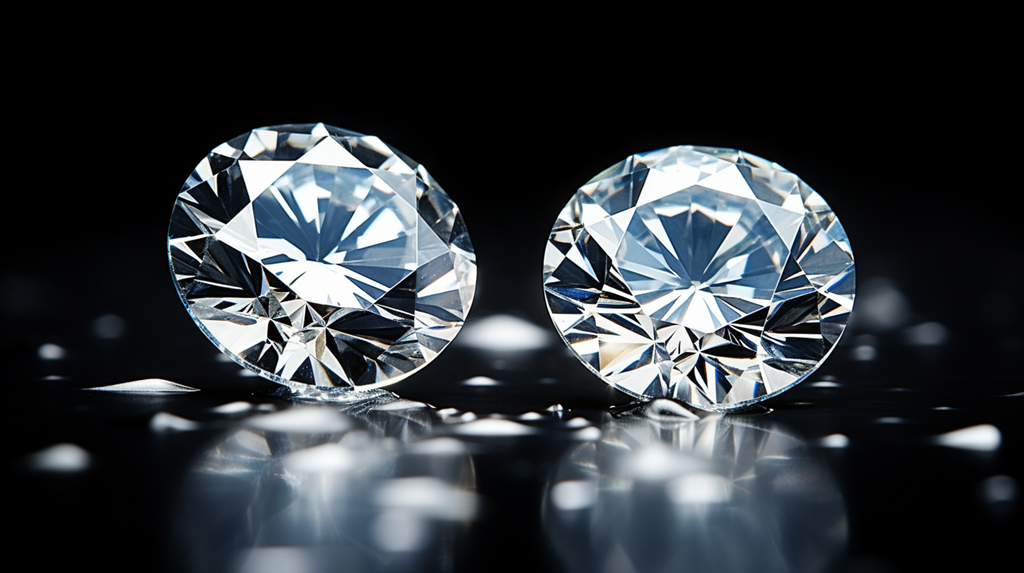When it comes to purchasing a diamond, one of the most important factors to consider is the “cut.” The term “diamond cut” refers not only to the shape of the stone but also to how well the diamond has been crafted and polished. It plays a crucial role in determining the overall beauty and brilliance of the gemstone.
Understanding the Concept of Diamond Cut
The cut of a diamond is often considered the most critical aspect of its appearance. While many people assume that the cut simply describes the shape of the diamond—such as round, princess, or oval—it actually encompasses much more. A diamond’s cut involves the proportions, symmetry, and polish of the facets, all of which influence how light interacts with the stone.
A well-cut diamond reflects light in such a way that it maximizes sparkle and fire. When light enters the diamond, it should ideally bounce off the internal facets and return to the viewer’s eye. If the cut is too shallow or too deep, light can escape through the sides or bottom, reducing the diamond’s brilliance. This is why expert craftsmanship is essential in creating a diamond that shines with optimal radiance.
The Grading System for Diamond Cuts
Diamond cuts are typically graded on a scale ranging from Excellent to Poor “What Does Diamond Cut Mean“. An Excellent cut diamond is one that has been meticulously crafted to reflect nearly all the light that enters it, resulting in exceptional brilliance. On the other hand, a Poor cut diamond may appear dull and lackluster, even if it has high clarity or color grades. When choosing a diamond, prioritizing a high-quality cut ensures that you are investing in a stone that will truly dazzle.
Lab-Made Diamonds: A Modern Alternative
In recent years, lab-made diamonds have gained significant popularity as a sustainable and ethical alternative to mined diamonds. These man-made gems are created in controlled laboratory environments using advanced technological processes that replicate the natural conditions under which diamonds form in the Earth’s mantle.
How Are Lab-Made Diamonds Created?
Lab made diamonds are produced using two primary methods: High Pressure-High Temperature (HPHT) and Chemical Vapor Deposition (CVD). In the HPHT process, carbon is subjected to extreme pressure and heat to crystallize into a diamond. The CVD method, on the other hand, involves placing a diamond seed in a vacuum chamber filled with carbon-rich gases, which are then heated until they break down and form layers of diamond around the seed.
Both methods result in diamonds that are chemically, physically, and optically identical to their natural counterparts. The only difference lies in their origin—one is formed over millions of years beneath the Earth’s surface, while the other is grown in a matter of weeks in a lab.
Advantages of Choosing Lab-Made Diamonds
One of the biggest advantages of lab-made diamonds is their environmental and ethical appeal. Traditional diamond mining can have devastating effects on ecosystems, including deforestation and soil erosion. Additionally, concerns about unethical labor practices and conflict diamonds have led many consumers to seek out alternatives. Lab-made diamonds eliminate these issues by providing a transparent and sustainable option.
Another benefit is affordability. Because lab-made diamonds do not involve the extensive extraction and supply chain costs associated with mined diamonds, they are often priced lower. This makes them an attractive choice for budget-conscious buyers who still want the timeless elegance of a diamond.
The Role of Cut in Lab-Made Diamonds
Just like natural diamonds, the cut of a lab-made diamond significantly impacts its overall appearance. Whether you choose a brilliant round cut or a sleek emerald cut, the quality of the cut will determine how well the diamond performs in terms of brilliance and fire. Reputable manufacturers of lab-made diamonds prioritize precision cutting techniques to ensure their stones meet the highest standards of excellence.
Are Lab-Made Diamonds Right for You?
Deciding between a natural and a lab-made diamond ultimately comes down to personal preference. If you value sustainability, transparency, and affordability, a lab-made diamond might be the perfect fit. On the other hand, if you prefer the romance and history associated with natural diamonds, you may lean toward a mined stone. Regardless of your choice, understanding the importance of diamond cut will help you select a gem that shines with unparalleled beauty.
In conclusion, the cut of a diamond—whether natural or lab-made—is a key factor in determining its visual appeal. By prioritizing a high-quality cut and exploring the growing options available in lab-made diamonds, you can find a gemstone that aligns with your values and dazzles with brilliance.

